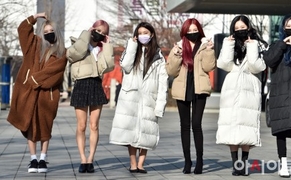 |
| Shoppers browse Black Friday deals at a store in Arlington, Virginia, on November 27. / Source: Reuters・Yonhap News |
A series of disappointing U.S. economic indicators—covering retail sales, producer prices and consumer sentiment—were released on November 25, showing clear signs of cooling consumption, weaker hiring and deteriorating household expectations heading into the crucial holiday season.
The Commerce Department reported that retail sales in September rose 0.2% from the previous month to $703.3 billion, marking the lowest gain in four months and falling short of the 0.3% increase forecast by economists surveyed by Dow Jones. The slowdown reflects reduced spending on automobiles, electronics and apparel, as tariff effects continue to weigh on household purchasing.
The September report had been delayed by more than a month due to the federal government shutdown.
Producer prices rise 0.3%, future inflation picture mixed
The Labor Department’s Bureau of Labor Statistics reported that the Producer Price Index (PPI) rose 0.3% in September from the previous month, matching market expectations and rebounding from August’s 0.1% decline.
On a year-over-year basis, PPI increased 2.7%.
Core PPI, which excludes volatile food and energy components, rose just 0.1%, below the 0.3% increase expected.
Because producer prices eventually feed into consumer prices, the PPI is considered a leading inflation indicator.
Consumer confidence plunges; recession signal flashing for 10 straight months
The Conference Board’s U.S. Consumer Confidence Index dropped sharply to 88.7 in November, down 6.8 points from October and significantly below forecasts. It is the lowest since April and the second-weakest reading in five years.
Of particular concern is the Expectations Index, which sank to 63.2, remaining below the critical threshold of 80 for the 10th consecutive month—a signal traditionally associated with an approaching recession.
Only 1% of respondents said business conditions were “good,” down from 21% in the previous month, and just 6% said jobs were “plentiful,” a steep drop from 29%.
Similarly, the University of Michigan’s consumer sentiment index fell to 51.0, the weakest reading since mid-2022 and the second-lowest for any November on record.
Hiring slows as ADP reports 13,500 weekly job losses
Private-sector employment also showed signs of cooling.
ADP reported that between October 12 and November 8, U.S. private employment fell by an average of 13,500 jobs per week, raising concerns about hiring momentum during what is typically the start of the holiday hiring boom.
ADP noted that weakening consumption is likely delaying or limiting job creation.
Fed faces policy dilemma ahead of December meeting
The Wall Street Journal wrote that the combination of softening labor markets, persistent inflation pressures, slower spending and heavier discount-seeking behavior underscores the fragility of the U.S. economy heading into the holiday season.
The Federal Reserve now confronts a policy dilemma for its December 9–10 FOMC meeting:
Cooling labor markets could argue for a rate cut
Persistent inflation pressures may justify holding rates steady
Complicating matters, the recent shutdown has delayed key economic data releases, making the Fed’s assessment even more challenging.
According to the CME FedWatch Tool, futures markets assign an 82.7% probability of a 25-basis-point rate cut in December, down slightly from 84.4% the previous day.
Most Read
-
1
-
2
-
3
-
4
-
5
-
6
-
7





















